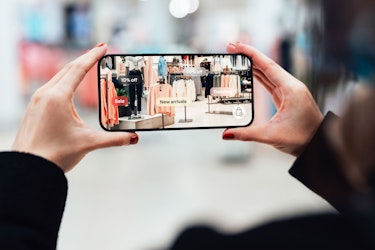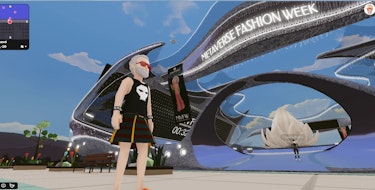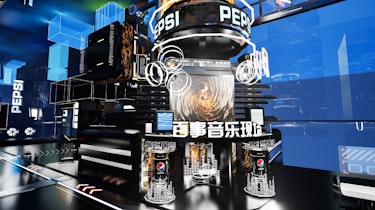The advent of the metaverse is revolutionizing many sectors, with retail being at the forefront of this transformation. Imagine a world where shopping isn't constrained by physical boundaries but is an immersive experience that combines the digital and physical realms seamlessly.
1. Virtual Showrooms
Virtual showrooms are becoming a vital tool for retailers, providing an interactive space where customers can explore products in a 3D environment. Unlike traditional online shopping, these showrooms allow users to interact with products, view them from different angles, and even customize them.
Virtual showrooms offer a level of interactivity and immersion that traditional e-commerce platforms cannot match. Shoppers can walk through virtual aisles, pick up products, and see detailed 3D renderings that provide a closer approximation to physical interaction. For instance, automotive companies can create virtual showrooms where potential buyers can explore different car models, view them from various angles, and even customize features such as color, interior design, and accessories. This not only enhances the shopping experience but also helps customers make more informed purchasing decisions.
In the fashion industry, virtual showrooms allow customers to try on clothes virtually using avatars that match their body measurements. This reduces the uncertainty often associated with online shopping and decreases return rates, benefiting both customers and retailers.

Credit: Medium
2. Augmented Reality (AR) Shopping:
AR technology brings a new dimension to the shopping experience by overlaying digital information onto the physical world. Imagine trying on clothes without leaving your home or visualizing how furniture fits in your living space.
AR shopping experiences bridge the gap between online and offline shopping by providing interactive, real-time product visualization. For example, furniture retailers can develop AR apps that allow customers to see how a sofa or dining table would look in their living room. By simply pointing their smartphone or tablet at the desired space, customers can visualize the product in their environment, check its dimensions, and see how it complements their existing decor.
Fashion retailers can leverage AR to create virtual fitting rooms, where customers can try on clothes and accessories using their smartphones. This not only enhances the shopping experience but also increases the likelihood of purchase by providing a better sense of how the product will look on the customer.

Credit: Newsweek
3. Interactive Advertising
In the metaverse, advertising can transcend traditional formats to become fully interactive experiences. Customers can engage with advertisements in a way that is both informative and entertaining, leading to higher conversion rates.
Interactive advertising in the metaverse allows brands to create engaging, immersive experiences that go beyond static images and videos. For instance, a beauty brand could develop an interactive ad where users can virtually try on makeup products, explore different looks, and receive personalized recommendations based on their preferences and skin tone. This type of advertising not only captures the user’s attention but also provides valuable insights into their preferences and behaviors.
Retailers can also create gamified advertising experiences that reward users for engaging with the brand. For example, a sportswear brand could develop a virtual fitness challenge where users earn points for completing workouts and can redeem these points for discounts on products.

Credit: zreality
4. Social Shopping
Shopping in the metaverse is a social activity, allowing users to shop with friends or family members, even if they are miles apart. This social aspect can significantly enhance the shopping experience, making it more enjoyable and interactive.
Social shopping in the metaverse enables users to share their shopping experiences in real-time, creating a virtual shopping spree with friends and family. They can browse virtual stores together, discuss products, and make purchasing decisions collaboratively. This social interaction enhances the overall shopping experience, making it more enjoyable and memorable.
Retailers can also host virtual events and launches where users can gather, interact with the brand, and explore new products together. For example, a fashion retailer could host a virtual fashion show where users can watch the latest collections, interact with designers, and purchase items directly from the show.

Credit: Vogue
5. Immersive Brand Experiences
Brands can create entire virtual worlds that reflect their identity and values, offering customers a deeply immersive experience. These virtual brand environments can host events, launch new products, and provide exclusive content.
Immersive brand experiences in the metaverse allow brands to create unique, engaging environments that reflect their identity and values. For instance, a luxury fashion brand could develop a virtual boutique that reflects its high-end aesthetics, complete with virtual runway shows, exclusive product launches, and interactive exhibits showcasing the brand’s history and craftsmanship.
Retailers can also create themed virtual environments that align with their brand’s narrative. For example, an outdoor gear retailer could develop a virtual adventure park where users can explore different terrains, participate in virtual outdoor activities, and learn about the brand’s products.

Credit: Dao Insights
6. Digital Twins
Digital twins are virtual replicas of physical stores or products that provide real-time data and analytics. This technology allows retailers to monitor and optimize their operations, enhance customer experiences, and make data-driven decisions.
For instance, a digital twin of a physical store can provide insights into customer traffic patterns, product placement, and inventory levels. Retailers can use this data to optimize store layouts, manage inventory more effectively, and improve customer service.
Digital twins can also be used to create virtual replicas of products, allowing customers to interact with them in a virtual environment before making a purchase. This can enhance the shopping experience by providing customers with more detailed information and a better understanding of the product.

Credit: illustrarch
As the metaverse continues to evolve, it presents unparalleled opportunities for retailers to innovate and engage with customers in new and exciting ways.
At CUUB, we understand that the future of retail lies in creating engaging, immersive experiences that go beyond traditional shopping methods. Our expertise in visual storytelling and cutting-edge technology enables us to create virtual environments that captivate and engage customers, offering a unique and memorable shopping experience. Whether it’s developing virtual showrooms, AR shopping experiences, interactive advertising, or immersive brand environments, CUUB is dedicated to helping retailers innovate and thrive in the metaverse.
